Ravaged by hate: Heart-rending stories in wake of communal violence in Delhi
Heart-rending stories emerging in aftermath of Hindu-Muslim communal violence in Delhi
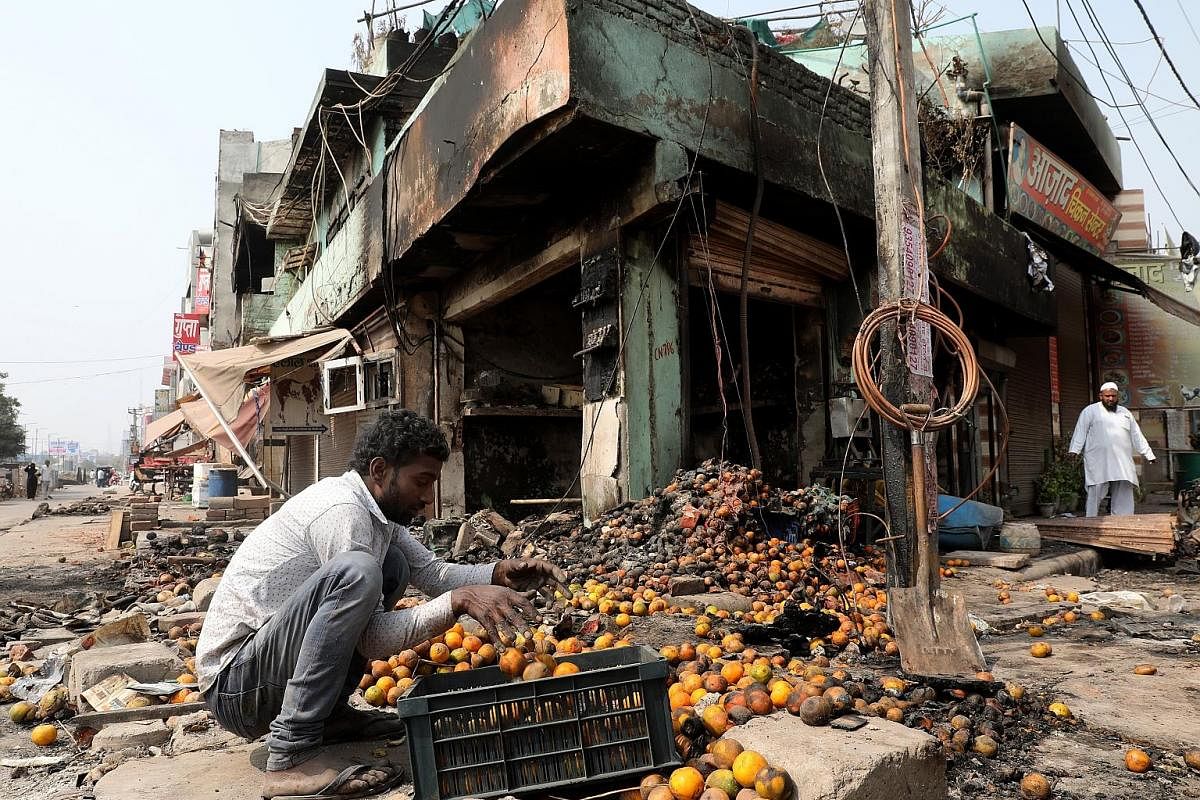
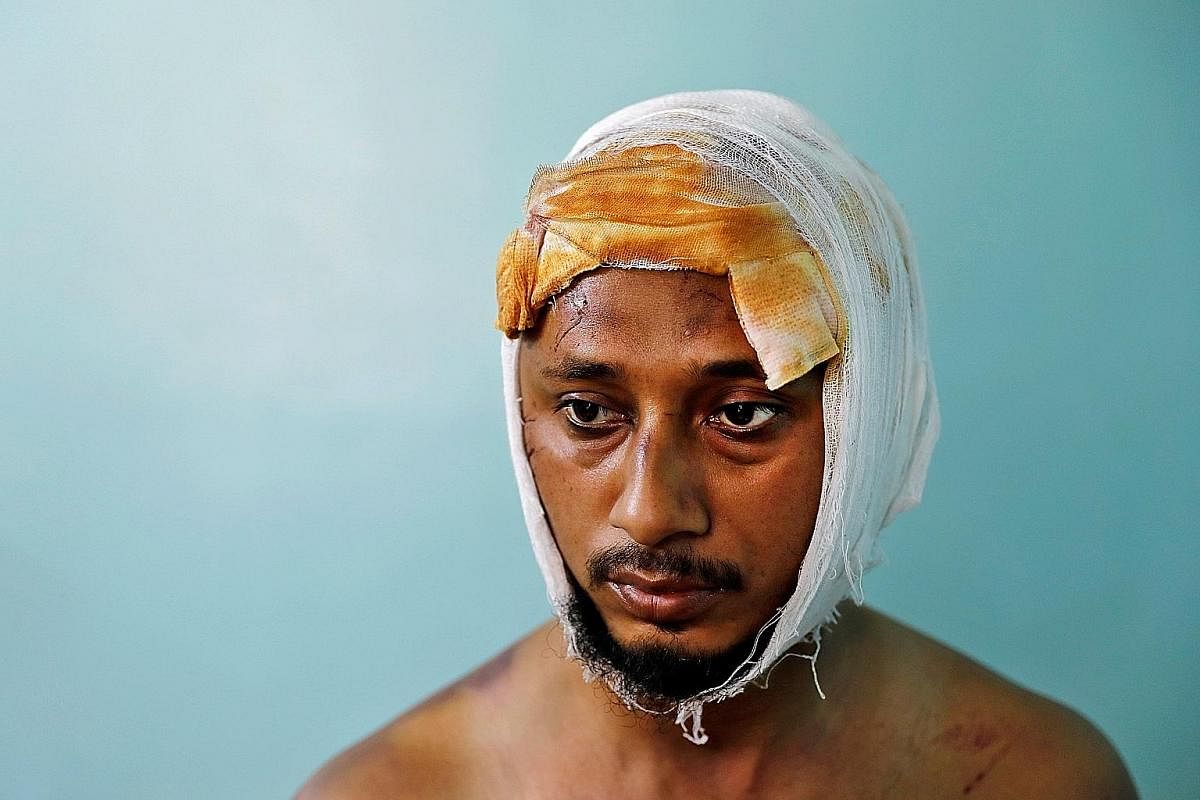
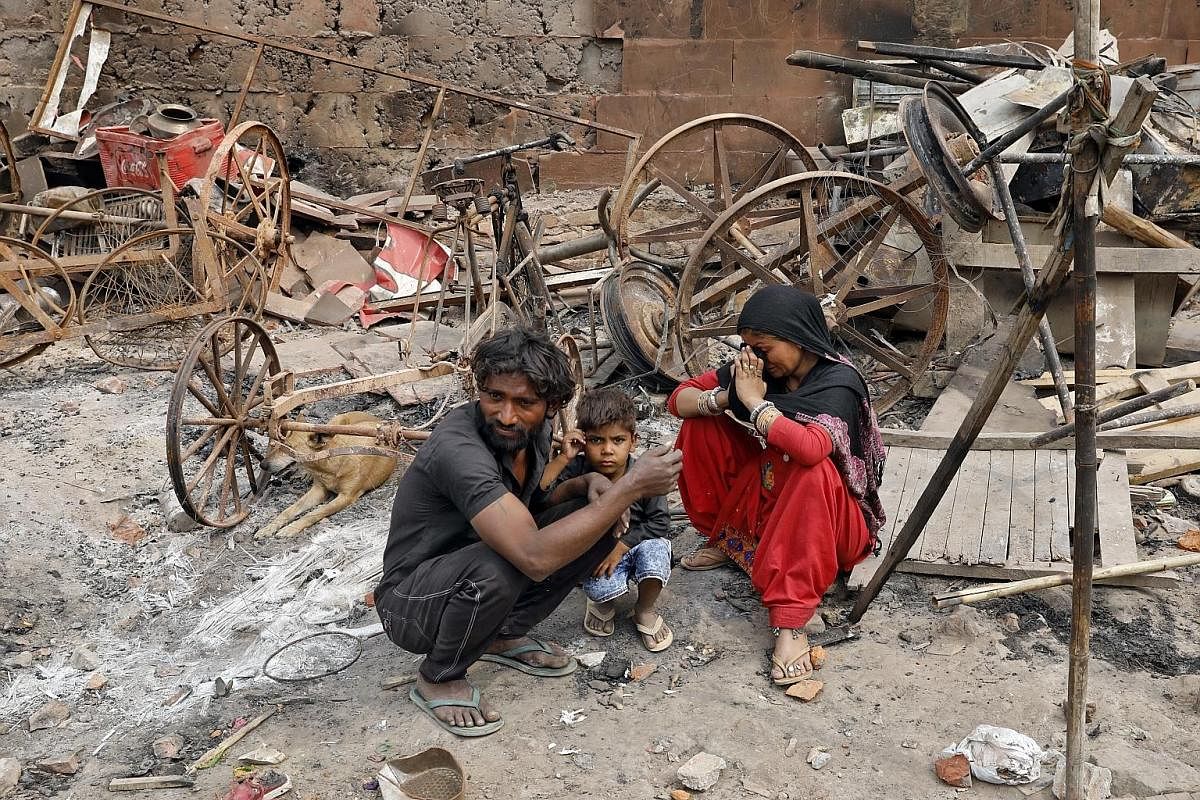
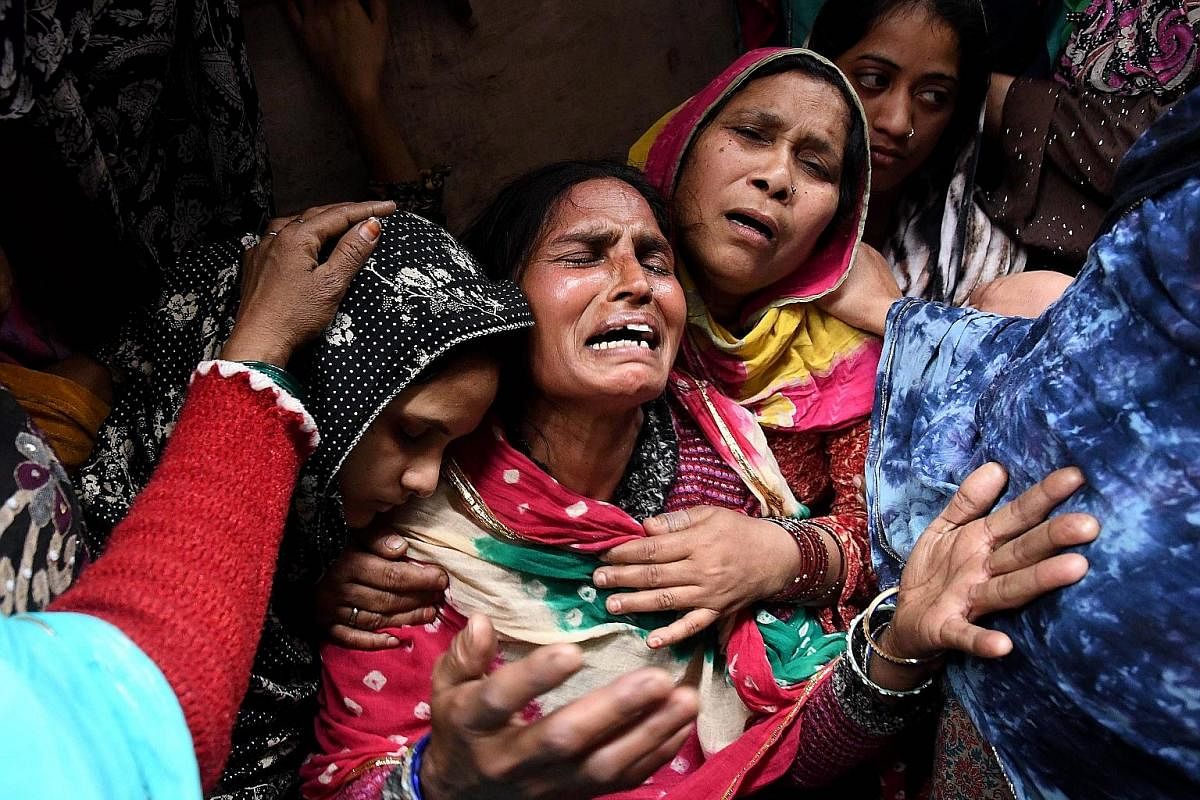
The fetid drains in north-east Delhi have attained notoriety these days as they cough up bodies of those killed in the riots that singed Delhi last week.
Mr Sabir Ali could have been one of them. The 32-year-old washerman, tired after a full day's work, was sleeping on Tuesday afternoon in his modest tenement that forms part of a small slum in Bhagirathi Vihar. A mob suddenly began stoning and torching the dwelling.
Mr Ali, unlike others, could not flee in time. The mob caught him and began thrashing him with rods. What happened next indicates the depravity unleashed in the worst bout of communal violence in India's capital since the anti-Sikh riots in 1984.
They stripped Mr Ali to ensure he was a Muslim. When they saw he was circumcised, the mob beat him with further vengeance until he was almost unconscious.
"One of them then suggested they throw me into the fire, but they chose to dump me into the drain, assuming I would drown," Mr Ali told The Sunday Times, showing injury marks all over his body.
That decision saved his life. He managed to swim to the other side and was fortunate to be saved by a local.
"Even then, they didn't stop attacking and started throwing bricks at me," Mr Ali added.
His is one of the many heart-rending stories to emerge from the Hindu-Muslim riots that broke out on Monday in Delhi, following clashes between groups opposing a controversial Citizenship Amendment Act (CAA) - one that discriminates against Muslim immigrants - and those arraigned against them.
The riots have claimed 43 lives so far and ravaged Muslim as well as Hindu families.
LOSSES ON BOTH SIDES
Around 200m from the slum is the residence of Mr Sanjay Kaushik, a Hindu.
He and his family fled their house on Tuesday afternoon, jumping from the rooftop onto another building. "I saw death and its morbid dance," he said, when asked to describe what he had seen.
There was a mob of "more than 2,000 people" on the road in front of his house involved in stone pelting, he said, adding that many were Muslim demonstrators against the disputed citizenship law.
His house is next to one of the many anti-CAA protest sites. It is, however, unclear who attacked his house or why. "This Hindu-Muslim talk escapes me. Ask how those who have suffered feel... both sides have lost," he said.
"All I am left with are the clothes I am wearing," Mr Kaushik added, as he and others mopped up burnt detritus from their houses, which had been ransacked and torched.
Many of the attackers were veiled and wore helmets, Mr Pawan Kumar, 45, caretaker of the nearby Arun Modern Public Senior Secondary School which was also ransacked, told The Sunday Times.
A Hindu family in nearby Yamu-na Vihar also had to flee via their rooftop after a restaurant on the ground floor of their building was set on fire.
One family member, Mr Manish Garg, 35, showed a video taken on Monday afternoon of people he described as "anti-CAA protesters" who crossed the road from the site of a protest in Chand Bagh to ransack their neighbourhood.
But Ms Rubeena Bano, 37, said Delhi Police also fired tear gas at women protesters at Chand Bagh and attacked them with sticks. They were accompanied by "Hindu rioters".
She suffered serious injuries in the attack, which sparked retaliation from Muslims. A video shared with this correspondent showed stones being pelted at the protest site from atop a nursing home on the Yamuna Vihar side.
ORIGINS OF THE RIOT
Who started the riots and where they first broke out is something only an impartial and thorough probe can establish.
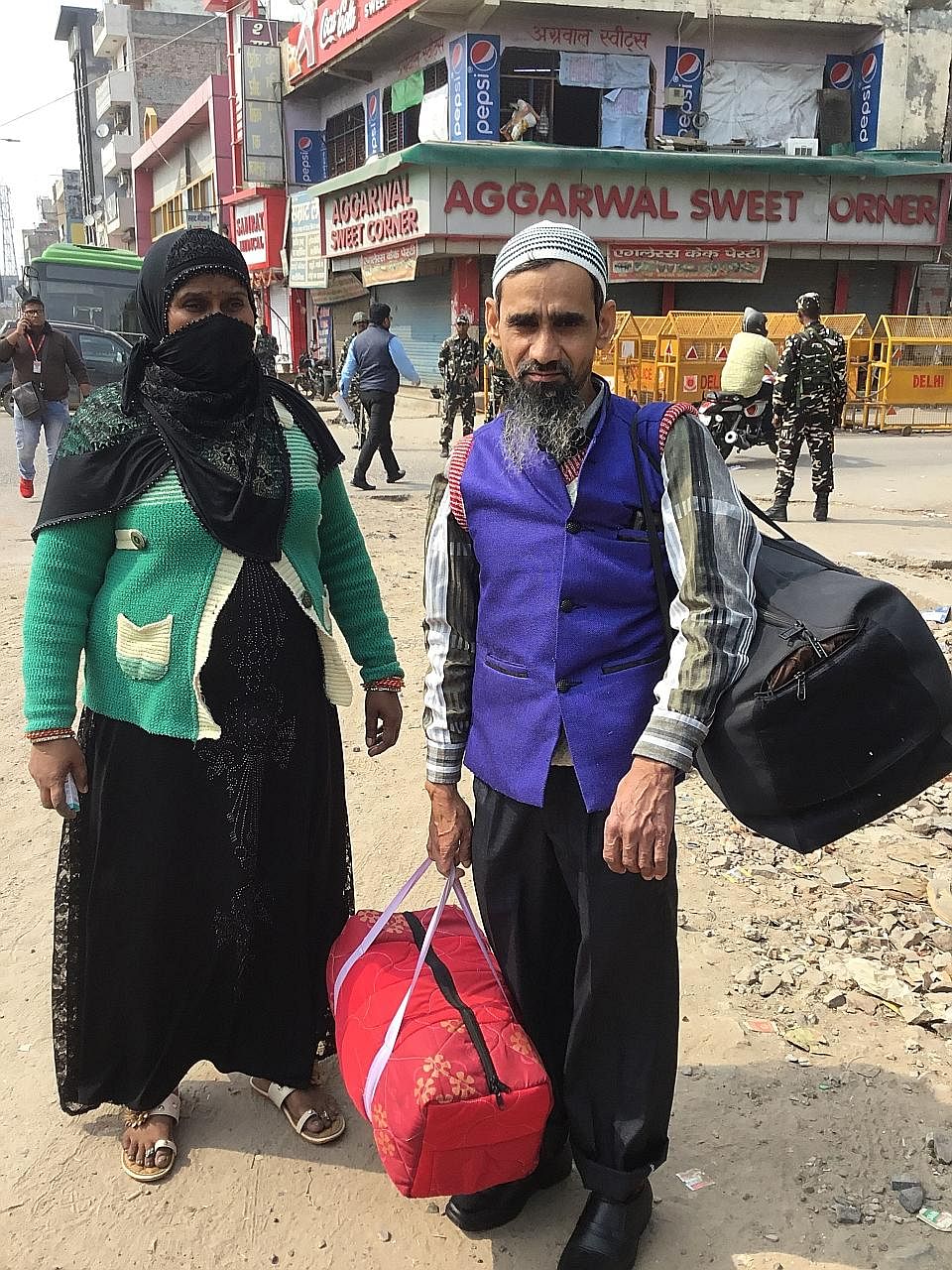
Delhi Police have instituted two investigation teams and appealed to locals to furnish evidence related to the riots, including videos.
What is clear, though, is that neighbourhoods with ongoing peaceful protests against the CAA have been turned into volatile powder kegs with incendiary rhetoric over several weeks from leaders of the Bharatiya Janata Party (BJP). A particularly infamous one suggested that those protesting were enemies of the nation who deserved to be shot.
A key turning point came when a few hundred Muslim women began a sit-in demonstration in Jafrabad on Feb 22, blocking a key road.
It attracted the ire of local firebrand BJP leader Kapil Mishra.
He held a counter rally nearby the following day and demanded that the police either clear the spot or he and his supporters would hit the road.
Clashes began soon after.
A provocative remark at a rally in Karnataka on Feb 20 by a Muslim politician from the All India Majlis-e-Ittehadul Muslimeen party, Mr Waris Pathan, implying that 150 million (Muslims) could overpower a billion (Hindus) did not help either.
Many of those dead have suffered gunshot wounds, indicating a certain amount of planning in sourcing the weapons, as well as petrol and bottles for the Molotov cocktails used prolifically in the riots.
Rioters were also ferried in vehicles, say locals, a development that the law-enforcing authorities failed to detect and prevent.
A majority of those identified among the dead so far are Muslims. Among them are Mr Mohammed Nasir Ali's two brothers.
They were killed near their home in Old Mustafabad on Wednesday evening when there was heavy police presence in the area. Their bodies were recovered from a drain.
"All I want is justice," the 18-year-old said, surrounded by many locals who had gathered at the house to mourn his brothers' deaths.
AN UNEASY CALM
Many frightened locals have begun fleeing, especially tenants who toiled as daily-wage earners.
On Friday, The Sunday Times spotted Mr Mohammed Shakir, 48, and his wife Farzana, 45, in Brijpuri leaving their rented home with a bag each, for their village in the state of Uttar Pradesh.
"The situation is really bad and we do not know when it can take a turn for the worse. Muslims have been attacked and killed," said Mr Shakir, who worked as a mason.
"The police did nothing to stop the rioters and, in fact, instigated them," he added.
His wife Farzana, who was at an anti-CAA protest when it came under attack, said she had seen a man in a helmet fire on a Muslim man despite the presence of policemen.
"How do we trust a force like this?" she asked.
Another worrying fallout from the riots - far greater than the material damage they have caused - is the venom they have injected into an already fragile co-existence between the Hindus and Muslims.
Mr Mohammed Yusuf's medicine shop in Moonga Nagar, a Hindu-dominated neighbourhood, was ransacked and looted. The 48-year-old said he can get over his monetary loss.
"But will I ever be able to set up my shop again in a Hindu-dominated neighbourhood? Who will ensure my life will be spared the next time something like this happens?" he asked.
Mr Shoaib Alam, 32, another resident in the neighbourhood, said: "Will my wife, who wears a burqa, ever be able to go to Yamuna Vihar (a Hindu-majority area) again and pick up my children from their school safely?"
Meanwhile, an uneasy calm has returned to the riot-hit neighbourhoods as locals return to their shops to assess damages and daily-wage workers are forced to head out and work.
Municipal authorities have begun cleaning the detritus and security personnel are keeping a strict vigil.
Mr Mohammed Kasim, 23, returned to his flower shop on Friday for the first time since Monday. Nothing remained but a few insulated boxes with some roses and orchids somewhat intact.
"I came here to take some flowers for a neighbour's funeral ceremony," he said, retrieving some rose petals from a box. The man, he said, was killed in the riots.
Mr Kasim's shop was set up against a Muslim shrine that was also vandalised. It is a few metres away from a police outreach centre in Khajuri Khas. At least two mosques were damaged in the riots.
"There is such fear. How can we be sure someone will not come and shoot again?" he said, adding that he did not know when he could set up his shop again.
The people who are still staying in in these neighbourhoods are taking turns to stay up all night to ensure no outsiders come in to rupture the painstakingly secured peace between the Hindus and Muslims.
"There is no problem between us locals here," said Mr Mohammed Salim, 40, who lives in a mixed Hindu-Muslim neighbourhood at Chand Bagh. He was standing next to a Hindu temple that had remained untouched during the violence.
Mr Manish Kumar, one of his Hindu neighbours, added: "Sometimes, a Muslim family sends tea over to keep us awake all night; sometimes, it comes from a Hindu house."
Join ST's Telegram channel and get the latest breaking news delivered to you.
A version of this article appeared in the print edition of The Sunday Times on March 01, 2020, with the headline Ravaged by hate: Heart-rending stories in wake of communal violence in Delhi. Subscribe
